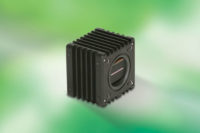Short range guided wave testing (SRGWT) is an application of guided ultrasonic sound waves using special types of probes. When the guided waves hit the discontinuities, the mode converted sound is reflected back and received by the transducer.
The major benefit of this technique is that it can be used to detect corrosion on plates and pipes that are inaccessible due to support structures, braces, brackets, saddles, legs, under insulations or other types of obstructions in the way of the region of interest. Another application is steel structures coated or surrounded by concrete.
Difference between Short Range Guided Wave and Long Range Guided Wave Technique
There are multiple other techniques available that utilize Guided Wave principle such as the long range guided wave technique (LR-GWT). While LRGWT can provide corrosion inspections over great lengths of test objects, it uses low frequency waves to achieve long distance penetration, compromising on the sensitivity and resolution. Whereas, since SRGWT is a short range technique, it allows us to utilize higher frequency sound waves resulting in much higher sensitivity and resolution.
A specially designed ultrasonic transducer is used to generate short range guided waves. The probe is usually scanned over a region that is easily accessible and clean of surface irregularities, facing in the direction of the region of interest which is usually inaccessible due to support structures or pure geometry of the test object. The scan range of this technique is up to two meters.
What are the advantages of using SRGWT?
- Since this technique uses pulse echo principles, only one side access is needed.
- A 2” base metal free of surface irregularities is sufficient to move the transducer on.
- This technique can be used on a wall thickness ranging from 6 mm to 25 mm.
- SRGWT is useful for detection of discontinuities related to loss of wall thickness such as corrosion, pitting, erosion, etc.
- This technique can utilize multiple frequencies, enabling detection of various sizes of discontinuities.
- There is no need to empty the contents when inspecting above ground storage tanks.
- The support structures surrounding the area of interest need not be removed as well.
- The tolerance for dimensions of a defect is usually within 0.040” for both length and width.
- Multiple scans can be stitched together to show a complete image of the inspection zone.
What are the drawbacks of using SRGWT?
- This method can only be conducted at ambient temperatures.
- It cannot distinguish between a discontinuity at the I.D from a discontinuity at the O.D. In other words, it cannot tell you the depth of the discontinuity.
- Surface of inspection must be clean base metal and be as smooth as possible so as to avoid diffraction of ultrasonic waves.
- The instrument and its accessories are very costly.
- The training is extensive and a lot of experience in UT is needed.
What is the future of this technique?
Recently SRUT has been using phased array technology to conduct inspections. One such instrument that offers this function utilizes a linear array phased array probe to get either time based or encoded scans from plates, pipe walls under insulation, above pipe supports, and in the air-to-soil interface areas.
The future of this technique like most others is headed towards automated scanning and Automated Defect Recognition (ADR) algorithms, making the inspections less operator dependent and more accurate.
Pratik Wagh is the general manager at the Institute of Nondestructive Testing and Training (INDTT). For more information,
email [email protected] or visit
www.pratikwagh.com.
Sources:
Sonotron NDT www.sonotronndt.com/SRUT_PA_L.htm
TechCorr http://techcorr.com/short-range-wave-ultrasonic-testing.php
Advanced NDT Solutions www.ansndt.com/advanced-ndt-services/srut_short_range_ultrasonic_testing.htm
National Inspection and Technical Services Co. Ltd. www.nits-ndt.com/advanced-ndt/short-range-ultrasonic-testing/
Laboratory for Materials Analysis & Testing Services (LMATS) www.lmats.com.au/services/advanced-ndt-solutions/srut-short-range-ultrasonic-testing

